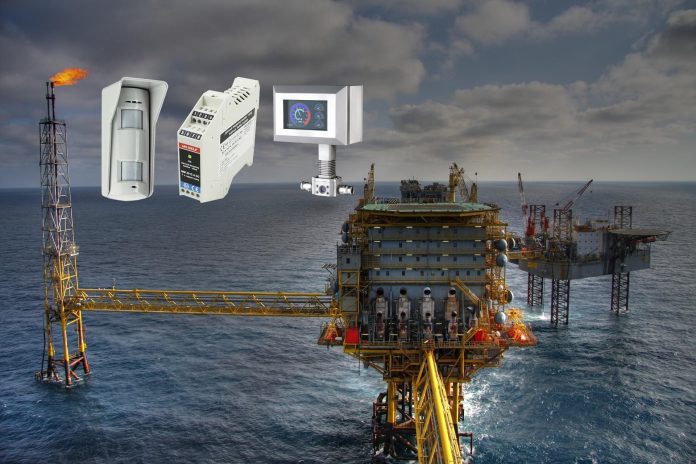All industries in which explosive atmospheres pose a risk of fire and explosion due to sparks and short circuits: mining, gas and fuel industries, including drilling platforms, pharmaceuticals require special precautions, procedures and equipment to ensure safety.
The ATEX certificate serves as a crucial proof of safety for products intended for use in such hazardous environments, known as EX zones.
Is It Always Worth Investing in Expensive ATEX Certified Products?
Investing in ATEX-certified products is often seen as a necessity for ensuring safety in explosive atmospheres. However, the question arises: is it always worth the investment, or can cheaper, solid products without an intrinsically safe certificate be used in some cases?
While ATEX-certified products guarantee compliance with stringent safety standards, there are scenarios where non-certified products might suffice. For instance, in environments where the risk of explosion is minimal or well-controlled, using robust, non-certified equipment could be a cost-effective alternative. However, this approach requires a thorough risk assessment and a clear understanding of the specific hazards present.
What Are EX Zones?
EX zones are classified areas where explosive atmospheres may occur due to the presence of flammable gases, vapors, or dust. These zones are categorized based on the frequency and duration of the occurrence of such atmospheres:
- Zone 0: An area where an explosive atmosphere is present continuously or for long periods.
- Zone 1: An area where an explosive atmosphere is likely to occur in normal operation occasionally.
- Zone 2: An area where an explosive atmosphere is not likely to occur in normal operation but, if it does, will persist for a short period only.
Examples of EX zones include:
- Chemical plants: Where volatile chemicals are processed and stored.
- Oil and gas refineries: Where flammable gases and liquids are handled.
- Grain silos: Where combustible dust can accumulate.
- Pharmaceutical manufacturing: Where solvents and other flammable substances are used.
The ATEX Certification Process
The ATEX certification process involves several steps to ensure that a product meets the required safety standards for use in explosive atmospheres:
- Risk Assessment: Identifying potential hazards and assessing the risks associated with the product.
- Design and Testing: Developing the product to meet ATEX standards and conducting rigorous testing to ensure compliance.
- Documentation: Preparing detailed technical documentation, including design specifications, test results, and risk assessments.
- Certification: Submitting the product and documentation to a notified body for evaluation and certification.
- Quality Assurance: Implementing a quality management system to ensure ongoing compliance with ATEX standards.
ATEX Products Offered by atexcertified.eu
Atexcertified.eu offers a range of ATEX-certified products designed to secure access to EX zones. These include:
- PiR Detectors: These passive infrared detectors are designed to detect movement in hazardous areas, ensuring safety and security, detecting anauthorised intruders in restricted zones
- RfiD Readers: Intrinsically safe RFID readers allow for secure and efficient tracking of assets and personel in explosive environments.
- SX EX Electromagnetic Locks: are ideal for securing access in various hazardous environments
Intrinsically Safe Products for Power Supply Protection
Atexcertified.eu also offers products that protect the power supply of other devices in EX zones:
- Zener Barriers: These devices limit the energy transferred to a hazardous area, preventing sparks and ensuring safety.
- EX Power Supplies: Designed to provide safe and reliable power in explosive atmospheres, these power supplies are essential for maintaining operations in EX zones.
- Intrinsically Safe Boxes: These enclosures protect electrical components from causing ignition in hazardous environments, ensuring the safety of both equipment and personnel.
Conclusion
Investing in ATEX certified products is crucial for ensuring safety in explosive atmospheres. While there may be scenarios where non-certified products can be used, a thorough risk assessment is essential. Understanding the nature of EX zones and the applications where intrinsically safe products are necessary can help in making informed decisions. The ATEX certification process ensures that products meet stringent safety standards, providing peace of mind in hazardous environments. Atexcertified.eu offers a range of ATEX-certified products that enhance safety and security in EX zones, making them a reliable partner for industries operating in these challenging environments.



 Bitcoin
Bitcoin  Ethereum
Ethereum  Tether
Tether  XRP
XRP  Solana
Solana  USDC
USDC  Cardano
Cardano  TRON
TRON  Lido Staked Ether
Lido Staked Ether  Avalanche
Avalanche  Toncoin
Toncoin